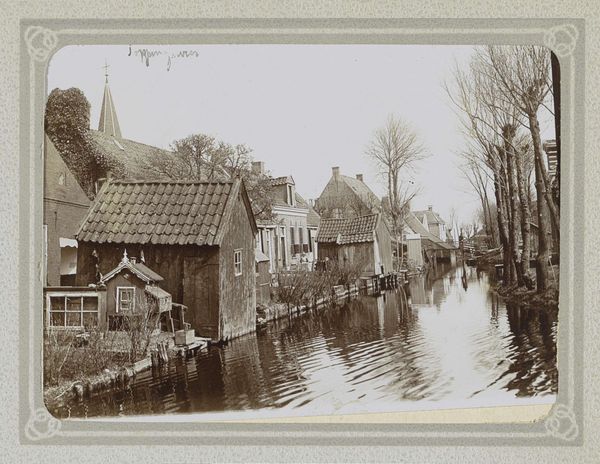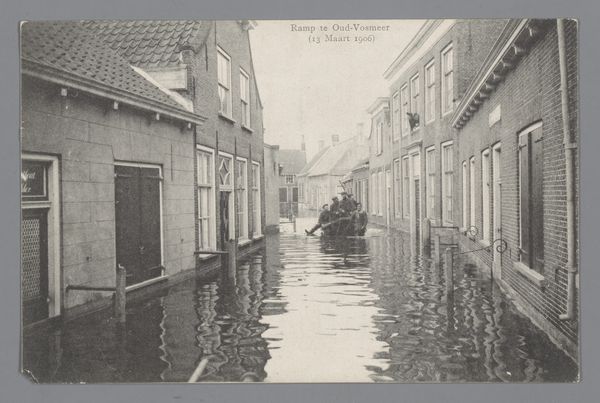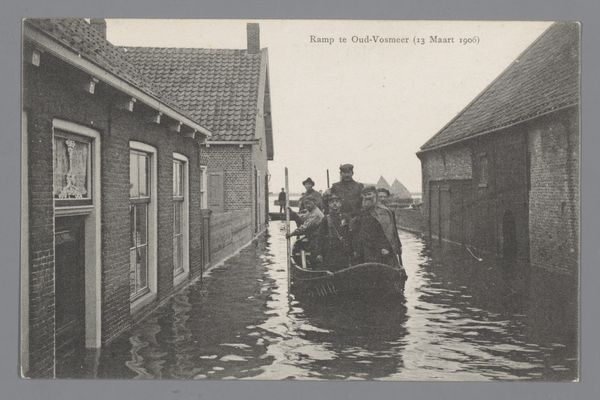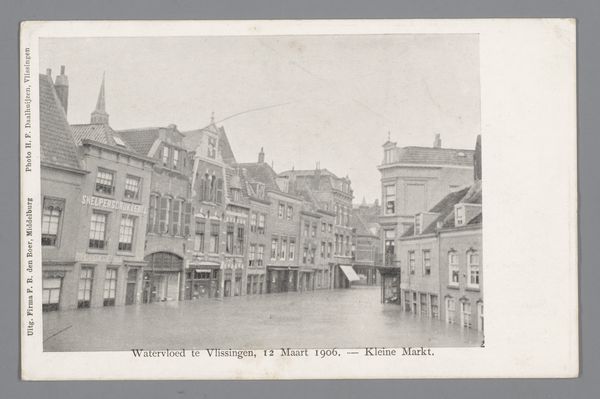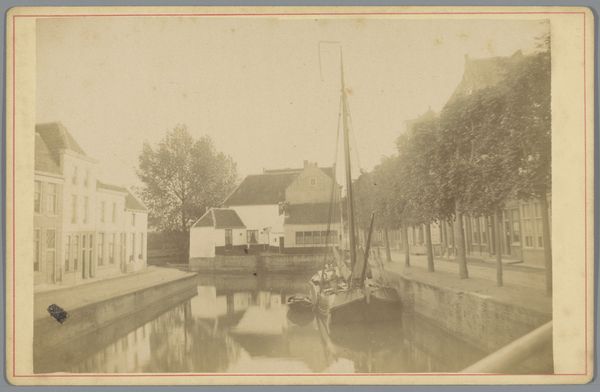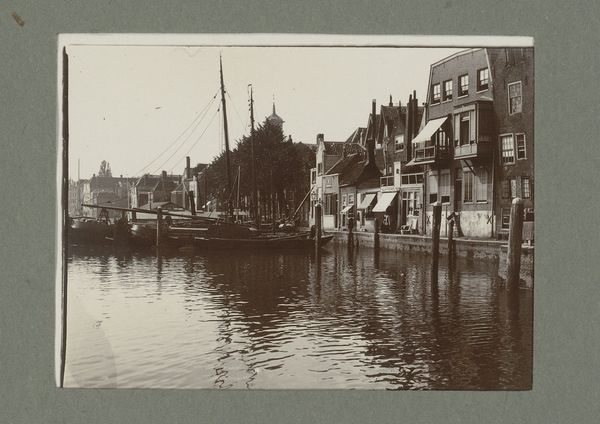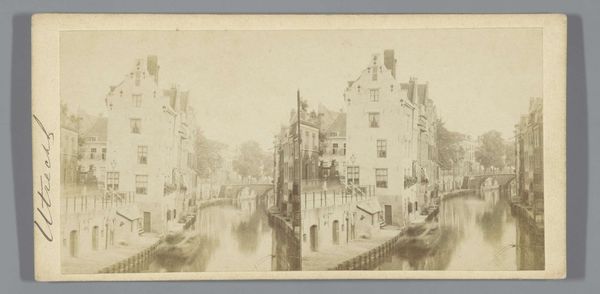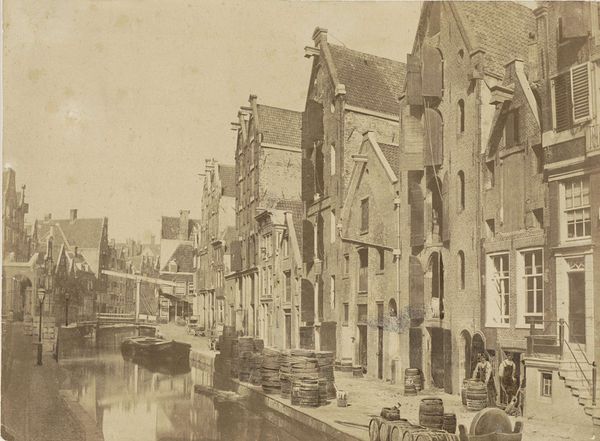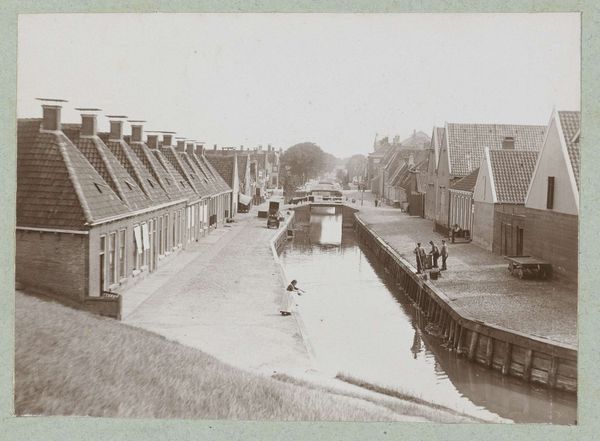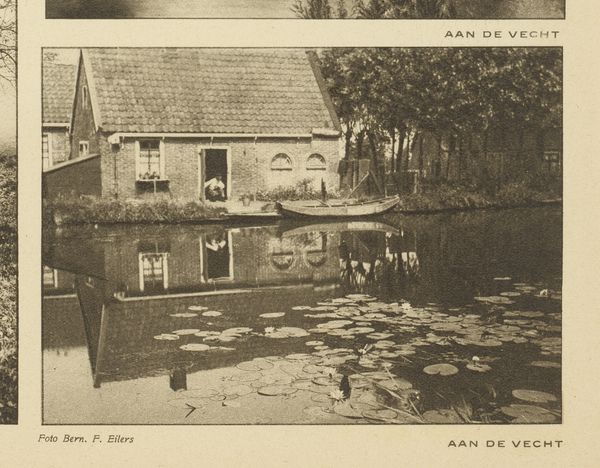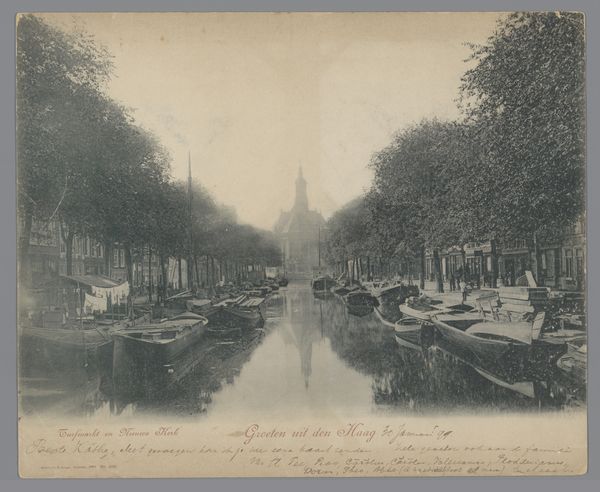
print, photography
# print
#
landscape
#
photography
#
historical photography
#
journal
#
19th century
#
cityscape
Dimensions: height 86 mm, width 135 mm
Copyright: Rijks Museum: Open Domain
Curator: Let’s take a look at “Gezicht op Meppel, Drenthe,” a photograph printed before 1915, likely a landscape piece documenting a moment in the life of Meppel. Editor: It's strikingly serene. The stillness of the water reflecting those quaint buildings… It feels almost too idyllic. There’s a definite constructed beauty to the scene, especially how the buildings seem to almost line up on top of each other to look over the water. Curator: I see your point about its almost staged appearance. The presence of figures by the water also makes the scene seem very deliberately put together, with each element adding another layer of narrative complexity. Perhaps these kinds of early landscape photos were as much about idealising a vision as documenting it. Editor: Absolutely. And how does this romanticized depiction potentially gloss over the socio-economic realities of early 20th-century Meppel? The picturesque obscures any potential hardships, focusing solely on the aesthetic appeal of the cityscape. Who benefits from these pictures? What are they meant to do? Are they postcards? Advertising pamphlets? Curator: Excellent questions! Thinking about the probable social functions of an image like this helps put it in context. It does evoke a feeling of quaint comfort; this photo probably played a role in selling Meppel as a tranquil place. In that regard, these pictures also speak of the socio-political dimensions of representing the city. Editor: Precisely. So much about what is shown–or not shown. The waterways likely played a key role in commerce and transportation. Do we see anyone at work? Are we encouraged to think about labor here, or consumption? The scale, I imagine, makes this photo accessible. What class of person is buying and disseminating this image? Curator: Those questions regarding its accessibility lead back to considering what sorts of people had access to cameras and photography printing tech at this time. Were people being included and, equally as important, excluded, in those processes? Thinking this way can illuminate our broader socio-historical context surrounding visual mediums. Editor: This image might, at first glance, appear simple, but as we see, even something this seemingly straightforward has multiple layers. Images like this become tools of historical examination themselves. Curator: A very insightful way to reflect upon how we read these types of documents! It demonstrates the multifaceted way an image of such a scene as this can serve to promote local appeal while prompting questions regarding that period's socio-political dimensions and its implications for us today.
Comments
No comments
Be the first to comment and join the conversation on the ultimate creative platform.
